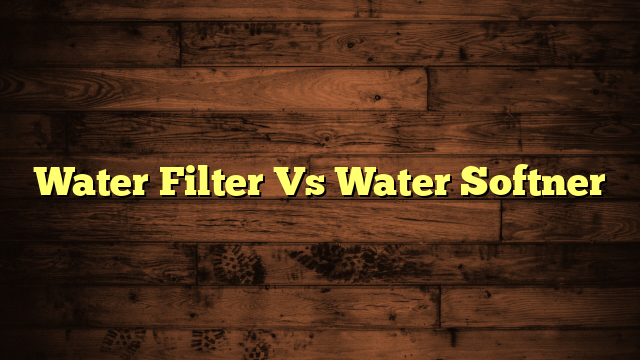How Does Water Softner Work?
You might wonder how a water softener can transform hard water into something more manageable. Fundamentally, it uses a process known as ion exchange, where pesky minerals like calcium and magnesium are swapped out for sodium ions. This involves resin beads that attract these hardness minerals, but there's more to the story than just swapping ions. Understanding the components and maintenance of a water softener can reveal even deeper insights into its functionality and benefits. So, what else do you need to know to truly grasp the impact of this system on your water quality?
Key Takeaways
- Water softeners utilize ion exchange to replace calcium and magnesium ions with sodium ions, reducing water hardness.
- Salt-based systems contain resin beads that attract hardness minerals while releasing sodium into the water.
- The brine tank holds salt, which is dissolved to regenerate the resin beads during the softening process.
- Regular maintenance, including salt replacement and system cleaning, is essential for optimal performance.
- Softened water improves soap lathering, reduces scale buildup, and enhances appliance lifespan.
Understanding Hard Water
Hard water is common in many households and can greatly impact your daily life. It contains high levels of water minerals, primarily calcium and magnesium. These minerals contribute to what's known as water hardness, which can lead to several noticeable hardness effects.
You might notice soap not lathering well, leaving behind a film on your dishes, or even that your clothes feel stiff after washing.
The presence of these minerals doesn't just affect your cleaning routine; it can also impact your plumbing system. Over time, hard water can cause scale build-up in your pipes and appliances, reducing their efficiency and lifespan.
You may find that your faucets and showerheads develop mineral deposits, which can diminish water flow.
In addition, hard water can be harsh on your skin and hair, leading to dryness and irritation. If you've ever experienced dull hair or flaky skin, hard water might be a contributing factor.
Understanding the impact of hard water is essential, as it can help you take the necessary steps to improve your water quality and overall home experience.
What Is a Water Softener?
Have you ever wondered how to effectively tackle the problems caused by hard water? A water softener is your solution. It's a device designed to remove minerals like calcium and magnesium from your water, which can cause scale buildup and other issues in your home. There are different water softener types, such as salt-based, salt-free, and dual-tank systems, each with unique features and benefits.
To give you a clearer picture, here's a quick comparison of the types:
| Water Softener Type | Description |
|---|---|
| Salt-Based | Uses sodium to exchange with minerals. |
| Salt-Free | Uses a different technology, like template-assisted crystallization. |
| Dual-Tank | Features two tanks for continuous soft water supply. |
| Magnetic | Claims to alter the properties of minerals without removing them. |
| Reverse Osmosis | Filters out minerals but is more complex and costly. |
As for water softener costs, they can vary widely depending on the type and brand. Investing in a quality water softener not only improves water quality but also protects your plumbing and appliances, making it a worthwhile consideration for any homeowner.
The Ion Exchange Process
The ion exchange process is at the heart of how most water softeners work. When hard water flows through your softener, it encounters resin beads that are coated with sodium ions. These beads are the key players in the ion exchange process.
As hard water passes over them, the calcium and magnesium ions—responsible for hardness—attach themselves to the resin beads. In exchange, sodium ions are released into the water.
This exchange effectively reduces the concentration of hard minerals in your water, making it softer and more manageable for everyday use. You mightn't notice the process happening, but it's quite efficient.
Over time, the resin beads become saturated with calcium and magnesium, requiring regeneration. During this phase, a salt solution flushes through the beads, replenishing the sodium ions.
Components of a Water Softener
A typical water softener consists of several essential components that work together to transform hard water into softer water. The heart of the system is the resin beads, which are charged with sodium ions. These beads attract and capture the calcium and magnesium ions that cause hardness, effectively replacing them with sodium ions.
Next, you've got the control head, which manages the flow of water through the system. It guarantees that water passes over the resin beads during the softening process and directs it to the brine tank for regeneration when necessary.
The brine tank holds a salt solution that replenishes the sodium ions in the resin beads, allowing the system to continue functioning efficiently.
The bypass valve is another critical component, allowing you to divert water away from the softener when needed, such as during maintenance or when you want unsoftened water for gardening.
Benefits of Using a Water Softener
Using a water softener can bring numerous benefits that enhance your daily life. You'll notice improved hygiene, as softened water helps soap lather better and rinse off more effectively, leaving your skin and hair feeling cleaner. Plus, it reduces the buildup of soap scum in your bathroom and kitchen, making cleaning easier.
Here's a quick look at some key benefits:
| Benefit | Description | Impact |
|---|---|---|
| Cost Savings | Softened water extends the lifespan of appliances. | Lower repair/replacement costs |
| Improved Hygiene | Better soap lathering leads to cleaner skin. | Enhanced personal care |
| Reduced Scale Buildup | Prevents mineral deposits in pipes and fixtures. | Fewer plumbing issues |
| Softer Fabrics | Keeps your clothes feeling soft and looking new. | Longer-lasting textiles |
| Eco-Friendly | Reduces the need for harsh cleaning chemicals. | Better for the environment |
Common Myths About Water Softeners
Many people enjoy the benefits of softened water, but misconceptions about water softeners can lead to hesitance in making the switch. One common myth is that water softeners remove all minerals, making the water unhealthy. In reality, they primarily eliminate hardness minerals like calcium and magnesium while leaving beneficial trace minerals intact.
Another softener misconception is that softened water is bad for plants. While it's true that high sodium levels can affect certain plants, most systems manage this effectively, and you can always use untreated water for your garden.
Furthermore, some folks believe that using a softener will dramatically increase your water bill. However, the reduced soap and detergent usage typically offsets any increase in water costs.
Myth debunking is essential here, as many think softeners are just for luxury. Softened water improves appliance longevity and efficiency, saving you money in the long run.
Finally, you might hear that water softeners require constant maintenance, but many modern systems are low-maintenance and self-regulating. Understanding these myths helps you make informed decisions about your home's water quality.
Maintenance and Care Tips
To keep your water softener running smoothly, you need to stay on top of a few key maintenance tasks.
Regularly replacing the salt, following a cleaning schedule, and monitoring your water hardness can make a big difference in performance.
Regular Salt Replacement
Regular salt replacement is vital for keeping your water softener running efficiently and effectively. The salt you use plays a significant role in the softening process, and choosing the right salt types can make a notable difference.
Most softeners work best with either sodium chloride or potassium chloride, and each has its own benefits. Sodium chloride is more common and often more affordable, while potassium chloride is a good option if you're looking to reduce sodium intake.
As for replacement frequency, it generally depends on your water usage and the size of your softener. You should check the salt level in your brine tank regularly—at least once a month. If the salt is low, refill it to guarantee your unit can continue softening water effectively.
It's best to keep the salt level at about two-thirds full to avoid bridging, which can cause blockages. Remember, when you replace the salt, avoid mixing different salt types, as it can affect performance.
System Cleaning Schedule
Keeping your water softener in top shape involves more than just replacing salt; a consistent system cleaning schedule is key to maintaining its performance. Regular cleaning helps improve system efficiency, ensuring your water stays soft and free of unwanted minerals and sediment buildup.
Here's a simple cleaning schedule to follow:
| Cleaning Task | Cleaning Frequency | Benefits |
|---|---|---|
| Salt Tank Cleaning | Every 6 months | Prevents salt bridging |
| Resin Bed Cleaning | Annually | Maintains softening efficiency |
| Brine Tank Inspection | Every 6 months | Detects leaks and clogs |
| Whole System Flush | Annually | Removes accumulated debris |
Monitor Water Hardness
While maintaining your water softener is essential, monitoring water hardness is equally important to guarantee peak performance.
Regular water testing helps you keep track of the hardness levels in your home. You can use simple test kits available at hardware stores or send samples to a lab for more precise readings.
Understanding the hardness scale is significant. Water hardness is measured in grains per gallon (gpg) or parts per million (ppm). Soft water typically falls below 1 gpg, while hard water can range from 7 gpg or higher.
By knowing where your water falls on this scale, you can adjust your water softener settings accordingly.
If you notice a change in your water's taste, feel, or if soap isn't lathering as it should, it's a sign that you should conduct a water test.
If you find that hardness levels are rising, you may need to regenerate your softener more frequently or check for issues like salt depletion.
Choosing the Right Water Softener
Choosing the right water softener can greatly improve your home's water quality and extend the lifespan of your plumbing and appliances. When you're on the hunt for a softener, consider the various softener types available, as each serves different needs. You'll find options like salt-based, salt-free, and magnetic softeners, each with its pros and cons.
Budget considerations also play a significant role in your decision-making process. You'll want to balance the initial purchase price with ongoing maintenance costs, as some systems require more upkeep than others.
Here's a quick comparison to help you visualize your options:
| Softener Type | Cost Range | Maintenance Level |
|---|---|---|
| Salt-Based | $400 – $2,000 | Moderate |
| Salt-Free | $500 – $1,500 | Low |
| Magnetic | $100 – $500 | Very Low |
Take your time evaluating these factors. By carefully selecting the right water softener, you'll enhance your home's water quality and enjoy the benefits for years to come.
Frequently Asked Questions
Can Water Softeners Remove Chlorine From Water?
Water softeners aren't designed for chlorine removal. For effective water treatment, you'll need a separate filtration system, like activated carbon filters, which specifically target and eliminate chlorine, ensuring cleaner, healthier water for your use.
How Long Do Water Softeners Typically Last?
Did you know that a well-maintained water softener can last up to 20 years? To maximize your softener's lifespan, follow maintenance tips like regular salt checks and cleaning the resin tank. You'll enjoy softer water longer!
Are There Any Health Risks Associated With Softened Water?
Softened water generally poses minimal health risks for most people. However, if you're on a low-sodium diet, the sodium content in softened water might have health implications. Always consult a healthcare professional if unsure.
Can I Use a Water Softener With Well Water?
Yes, you can use a water softener with well water. Just make sure the system's designed for water treatment to effectively remove hardness without affecting any minerals beneficial to your overall health.
What Happens if I Forget to Add Salt?
If you forget to add salt, your water softener will face salt depletion, leading to ineffective softening. Regularly check salt levels and follow maintenance tips to guarantee your system runs smoothly and efficiently.
Conclusion
To summarize, a water softener can greatly enhance your water quality and protect your home's plumbing and appliances. Imagine this: a family who struggled with stubborn limescale buildup in their dishwasher found that after installing a water softener, not only did their dishes come out sparkling clean, but they also extended the appliance's life. By investing in a water softener, you're not just enhancing your water; you're also making a sound choice for your home's future.







